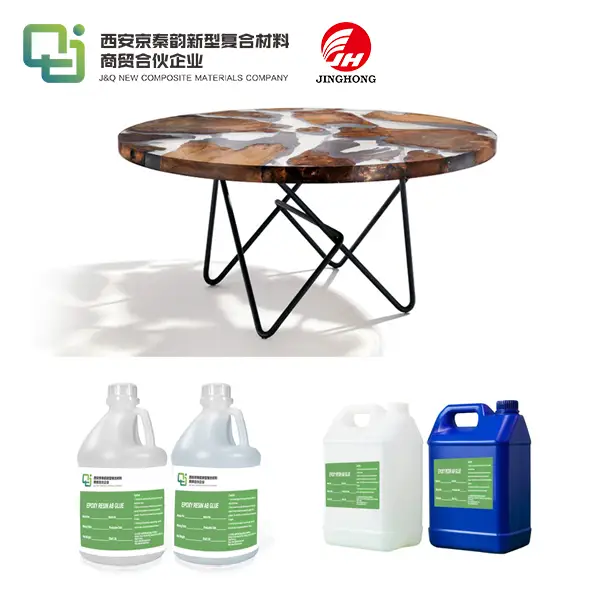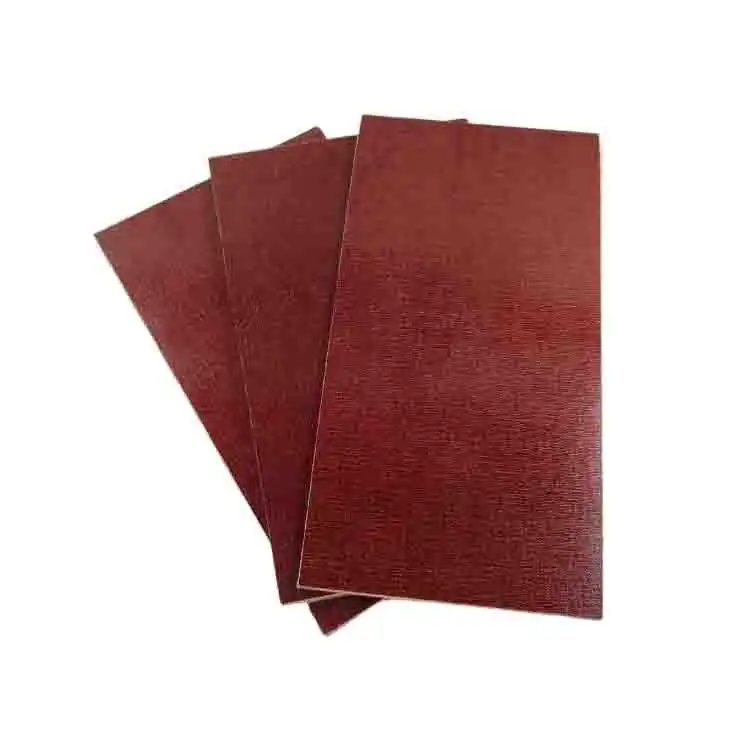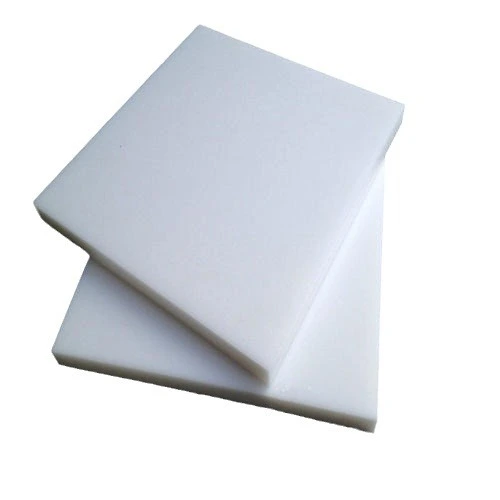How is an Epoxy Resin Sheet made?
2024-05-10 14:40:47
Epoxy resin sheets are flexible and strong materials utilized in a wide run of applications, from gadgets to mechanical components. In this article, we will investigate the prepare of making these sheets, emphasizing the materials and strategies that guarantee their tall quality and usefulness.
Understanding the Basics of Epoxy Resin
Epoxy gums are a lesson of receptive polymers and prepolymers that contain epoxide bunches. These tars are profoundly respected for their amazing mechanical properties, tall warm and chemical resistance, and solid adhesiveness. The most common epoxy tars are delivered by responding epichlorohydrin with bisphenol-A in the nearness of a catalyst. This prepare shapes what's known as bisphenol-A diglycidyl ether (DGEBA),
- Formulation: The process begins with the formulation of the epoxy resin mixture. Epoxy resin is typically a two-part system consisting of a resin and a hardener. These components are mixed together in specific proportions to initiate the curing process. Extra added substances, such as fillers, shades, and modifiers, may too be consolidated to upgrade properties such as quality, adaptability, or fire resistance.
- Mixing: Once the epoxy resin formulation is prepared, it is thoroughly mixed to ensure uniform distribution of the resin, hardener, and any additives. Proper mixing is critical to achieving the desired properties and ensuring the curing reaction occurs evenly throughout the material.
- Casting or Molding: The mixed epoxy resin is then poured or injected into molds or onto substrates, depending on the desired shape and size of the final product. Molds may be made of various materials, such as metal, plastic, or silicone, and can be customized to produce sheets of different thicknesses and dimensions.
- Curing: After casting or molding, the epoxy resin undergoes a curing process to transform it from a liquid to a solid state. Curing typically occurs at elevated temperatures or through the use of catalysts or initiators that promote chemical cross-linking between the resin molecules. The curing process may take several hours to complete, depending on factors such as temperature, humidity, and the specific epoxy resin formulation used.
- Post-Curing (Optional): In some cases, sheets may undergo post-curing treatment to further enhance their properties. Post-curing involves subjecting the cured material to additional heat or UV radiation to promote additional cross-linking and improve mechanical strength, chemical resistance, or thermal stability.
- Finishing: Once the sheets are fully cured, they may undergo finishing processes such as trimming, sanding, or surface treatment to achieve the desired appearance and dimensions. This may include removing excess material, smoothing rough edges, or applying coatings or laminates for additional protection or aesthetic purposes.
- Quality Control: Throughout the manufacturing process, quality control measures are implemented to ensure the final sheets meet specified standards and requirements. This may involve inspecting raw materials, monitoring process parameters, and testing finished products for properties such as strength, adhesion, and chemical resistance.
By following these steps, manufacturers can produce sheets with consistent quality and performance for a wide range of applications, including aerospace, automotive, construction, electronics, and marine industries.
The Production Process of The Sheets
Epoxy resin sheets are manufactured using a variety of sheet forming technologies. These technologies often involve modifying liquid epoxy resins to enhance certain characteristics like adhesiveness, heat resistance, and ease of processing. For instance, the Nagase ChemteX Corporation utilizes its developed technologies to create sheets that maintain the inherent properties of epoxy resins while improving workability and functionality in specific applications, such as semiconductor and electrical uses .
- Formulation of Epoxy Resin Mixture:The process begins with formulating the epoxy resin mixture. Epoxy resin typically consists of two main components: the epoxy resin itself and a hardener. These components are mixed together in precise proportions to initiate the curing process. The ratio of resin to hardener can vary depending on the desired properties of the final product and the specific application requirements. Additional additives, such as fillers, pigments, or modifiers, may also be incorporated into the mixture to enhance certain properties or achieve specific performance characteristics.
- Mixing:Once the resin mixture is formulated, it is thoroughly mixed to ensure uniform distribution of all components. Proper mixing is essential to ensure that the resin and hardener react evenly and initiate the curing process effectively. Mixing may be done manually or using specialized equipment such as mixers or agitators, depending on the scale of production and the viscosity of the resin mixture.
- Casting or Molding:The mixed epoxy resin is then poured or injected into molds or onto substrates to shape the material into sheets. Molds may be made of various materials, such as metal, plastic, or silicone, and can be customized to produce sheets of different thicknesses, sizes, and surface textures. For larger-scale production, automated molding processes may be used to ensure consistency and efficiency in shaping the sheets.
- Curing:After casting or molding, the epoxy resin undergoes a curing process to transform it from a liquid to a solid state. Curing typically occurs at elevated temperatures, which accelerate the chemical reaction between the resin and hardener and promote cross-linking of the polymer chains. The curing process may take several hours to complete, depending on factors such as temperature, humidity, and the specific epoxy resin formulation used.
- Post-Curing (Optional):In some cases, sheets may undergo post-curing treatment to further enhance their properties. Post-curing involves subjecting the cured material to additional heat or UV radiation to promote additional cross-linking and improve mechanical strength, chemical resistance, or thermal stability.
- Finishing and Quality Control:Once thesheets are fully cured, they may undergo finishing processes such as trimming, sanding, or surface treatment to achieve the desired appearance and dimensions. Quality control measures are implemented throughout the production process to ensure that the final sheets meet specified standards and requirements. This may include inspecting raw materials, monitoring process parameters, and testing finished products for properties such as strength, adhesion, and chemical resistance.
Curing and Hardening
One crucial step in the production of sheets is the curing process, where the resin mixtures are hardened into a solid form. Curing involves mixing the epoxy resin with a hardener or curative, which helps the resin polymerize and cross-link into a three-dimensional network. This process is vital as it determines the mechanical strength and thermal stability of the final product. The type of hardener and the conditions under which curing takes place can significantly affect the properties of the epoxy resin sheet .

Specialized Epoxy Resin Types
There are specialized types of epoxy resins used for specific applications. For example, glycidylamine epoxy resins are known for their high functionality and are used in applications requiring strong, durable bonds and high-performance coatings. Novolac epoxy resins, another specialized type, are used when high thermal stability and chemical resistance are needed. These resins are formulated to enhance specific properties such as flame retardancy and electrical insulation .
Applications of The Resin Sheets
The sheets are employed in a diverse array of applications due to their robust properties. They are particularly valuable in the electronics industry for components like insulators and conductors due to their excellent electrical insulation properties. Additionally, their resistance to environmental factors makes them suitable for outdoor applications where materials need to withstand harsh conditions.
Conclusion: Why Choose Us as Your Epoxy Resin Sheet Supplier?
As a professional manufacturer and supplier, we pride ourselves on delivering high-quality epoxy resin sheets from our GMP-certified factory. We maintain large stock levels and offer comprehensive certificates, supportingOEM partnerships with fast delivery and secure packaging. Our products undergo rigorous testing to ensure they meet the highest standards. We invite you to contact us to learn more about how ourepoxy resin sheets can meet your needs, ensuring reliability and excellence in all your projects.







